Training for a Grand Canyon Hike
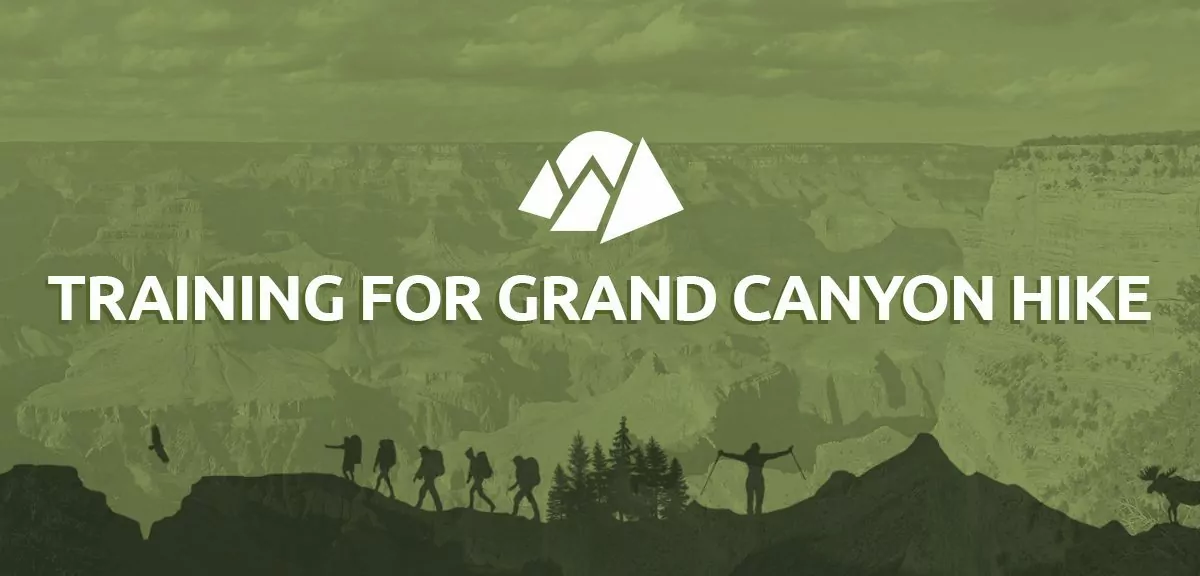
The Grand Canyon is perhaps the world’s most celebrated hiking destination. A mile deep and up to 18 miles wide, this American icon is a beautiful, awe-inspiring testament to geologic history.
But walking in this park is no walk in the park. Steep trails, thin air and dramatic temperature fluctuations are just a few of the factors that make this natural wonder one of the most challenging places to hike. It’s so challenging, even experienced hikers in good shape need to undergo training for a Grand Canyon hike.
This useful guide will teach you how to hike the Grand Canyon by discussing the conditions you’ll encounter and how to prepare for them.
Grand Canyon Hiking Conditions
To prepare for a Grand Canyon hike, hikers must become familiar with the conditions they’ll be facing, which include the following.
- Steep trails: The North Rim is 8,000 feet above sea level, the South Rim is 7,000 and the canyon floor is around 2,400. Hikers climbing in or out of the canyon will face an elevation change of approximately a mile — and these sheer differences in elevation mean the trails can be extremely steep. Climbing up them requires a high level of exertion, and going down can be hard on your knees.
- Low humidity: The Grand Canyon has lower humidity than most other places in the country, ranging from 10 to 30 percent. These low humidity levels can cause your sweat to quickly evaporate, meaning your body won’t be benefiting from its cooling effects.
- High elevation: Hikers may be short of breath when hiking at or near the rims. High-altitude illness, which typically happens at elevations over 5,000 feet, manifests itself as either high-altitude pulmonary edema, high-altitude cerebral edema or acute mountain sickness.
- Temperature differences depending on elevation: The wide range of elevations in the canyon causes extreme fluctuations in temperature. Generally speaking, every 1,000 feet lost in altitude comes with an increase in temperature of 5.5 degrees Fahrenheit. The North Rim has an average July high of 78 degrees Fahrenheit, whereas Phantom Ranch, on the canyon floor, experiences an average July high of 106.
- Temperature differences depending on time of day: Due to the Grand Canyon’s low humidity, the temperature in any given area can change dramatically over one day. In September — which many people consider one of the most comfortable times to visit — Phantom Ranch has an average high of 96 degrees Fahrenheit and an average low of 68.
- Long distances: Hiking into the canyon will require a fair degree of endurance. A hike to the river and back is 15 to 27 miles long, and a rim-to-rim hike is 21 to 24 miles long.
Required Gear
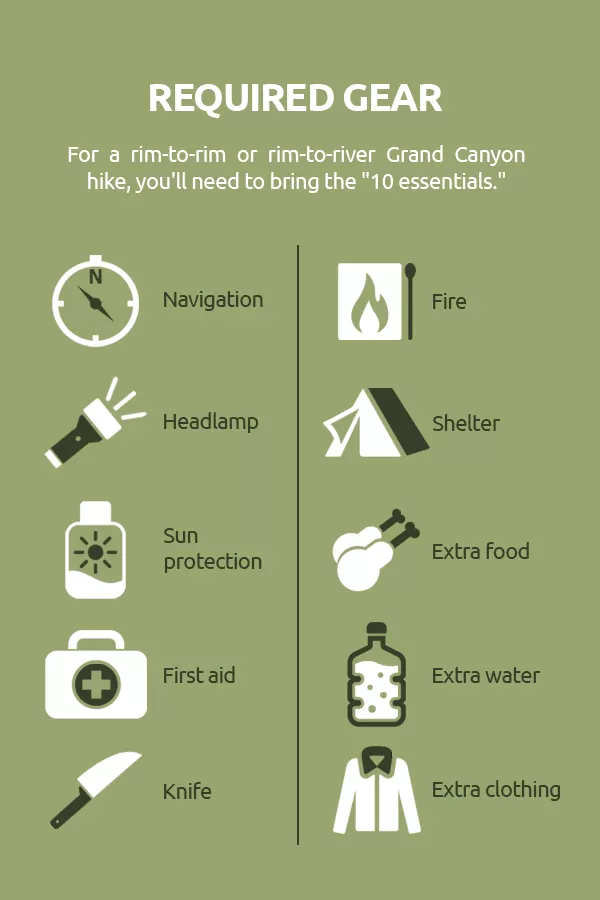
Preparation for a Grand Canyon hike also requires hikers to adjust to the weight of their gear. For a rim-to-rim or rim-to-river Grand Canyon hike, you’ll need to bring the “10 essentials.”
- Navigation: Tools include a compass, map, GPS device, altimeter, satellite messenger or personal locator beacon.
- Headlamp: Make sure to carry spare batteries.
- Sun protection: These include sunscreen, sunglasses and sun-protective clothing.
- First aid: Be sure to bring insect repellent and foot care supplies.
- Knife: Bring a kit to repair your gear.
- Fire: Should include a lighter, matches, tinder or stove.
- Shelter: This includes a tent, tarp, space blanket and bivy.
- Extra food: Carry more than you think you’ll need.
- Extra water: You should have a bigger supply than you think you will drink.
- Extra clothing: Bring more than you estimate needing.
In addition to enduring the length, heat and dryness of the hike, you will also need to be able to carry a heavy backpack. But don’t feel overwhelmed — with the right training regimen, you’ll be able to complete this trek successfully.
How to Train for a Hike in the Grand Canyon
Now that you have a better idea of the conditions you’ll be facing, we’ll now show you how to train to hike down the Grand Canyon. You may need to change or supplement these training tips depending on how fit or healthy you are — if you have bad knees, for instance. If you feel uncomfortable about beginning a training regimen, consult with your physician first.
Training for a hike in the Grand Canyon should include:
1. Hiking Mountains and Trying Difficult Trails
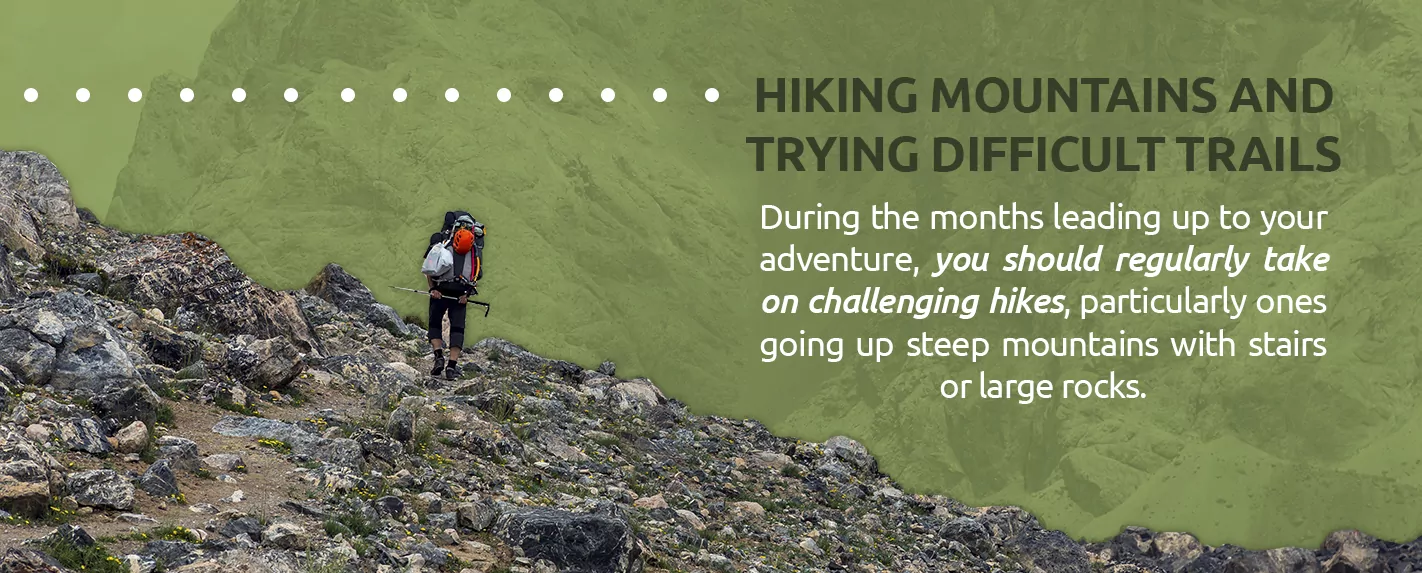
It is critical that you practice for elevation change, especially if you are training for a rim-to-rim one-day hike. During the months leading up to your adventure, you should regularly take on challenging hikes, particularly ones going up steep mountains with stairs or large rocks. On your Grand Canyon hike, you’ll constantly be climbing stairs and walking over rocks, so you’ll need to condition your joints and muscles to handle them.
The trails you choose should have an elevation gain of at least 1,000 feet. While this is nowhere near the elevation gain you’ll encounter in the Grand Canyon, it will nonetheless give you an idea of the effects of elevation change. If you hike the same trail multiple times, set a goal to hike it faster each time so you can increase your endurance and strengthen your legs.
You should also aim to hike high-altitude trails. If possible, pick trails at around 8,000 feet in elevation so you can get a feel for hiking with lower oxygen levels. If you usually work out at or near sea level, the Grand Canyon’s thinner air may cause you to gasp more than you would expect.
You should also hike in hot weather to see how your body reacts to exercising in the heat. Become familiar with common heat-related illnesses and the best ways to treat and avoid them.
One of the most important goals in your training is to build endurance, so try to pick longer hikes over shorter ones. This way, you’ll test the limits of your shoes, tendons, joints, etc.
2. Practicing on Stairs
Running up and down stairs is another way to condition yourself to inclines and declines by strengthening your hamstrings and glutes. It will also boost aerobic fitness. Find a tall building, a local park or some bleachers to prepare your legs for the Grand Canyon’s many steps and altitude changes.
Don’t forget to warm up before your run, which you can do by walking the stairs or running some laps. And once you start running, make sure not to overdo it. Take breaks between your bursts of exercise and try to keep the workout between 20 and 30 minutes.
3. Improving Your Cardio
The more you can work on your cardio, the less trouble you’ll have on your Grand Canyon hike. One of the best ways to boost your endurance is by running a few times every week. Swimming, cycling, using elliptical machines and jumping rope can also help.
An even better way is to run on trails, which will help you become more accustomed to various types of terrain. Just make sure to wear trail-running shoes that have good traction and can protect your feet from roots and rocks.
4. Practicing Yoga
Consider taking a weekly yoga class to improve your flexibility, breathing and overall strength. Many types of yoga exist, so if you’re new to the practice, do some research and pick an introductory class.
One way to experience exercising in the heat is to take a “hot yoga” class, which takes place in a room heated up to approximately 100 degrees Fahrenheit.
5. Training Using the Gear You’ll Take on Your Grand Canyon Hike
Keep in mind you may be carrying up to 30 pounds in your backpack, and you don’t want to shock your body with this extra weight once your adventure begins. If you’re planning to backpack in the Grand Canyon, practice hiking trails with all the gear you’re planning to take on your trip. Not only will this condition your body to carry a heavy backpack, but it will also let you know whether you need to adjust your weight load or equipment.
If you haven’t bought all your equipment yet, but want to begin training right away, you can add weight to your backpack to simulate carrying all your gear.
Use all your equipment before the big day to make sure you’re bringing all the essential items, everything works properly and that none of your clothing chafes or irritates you. It is critical to break in your hiking boots before your journey, unless you want to endure the pain of walking with blisters.
Training Exercises for Hikers
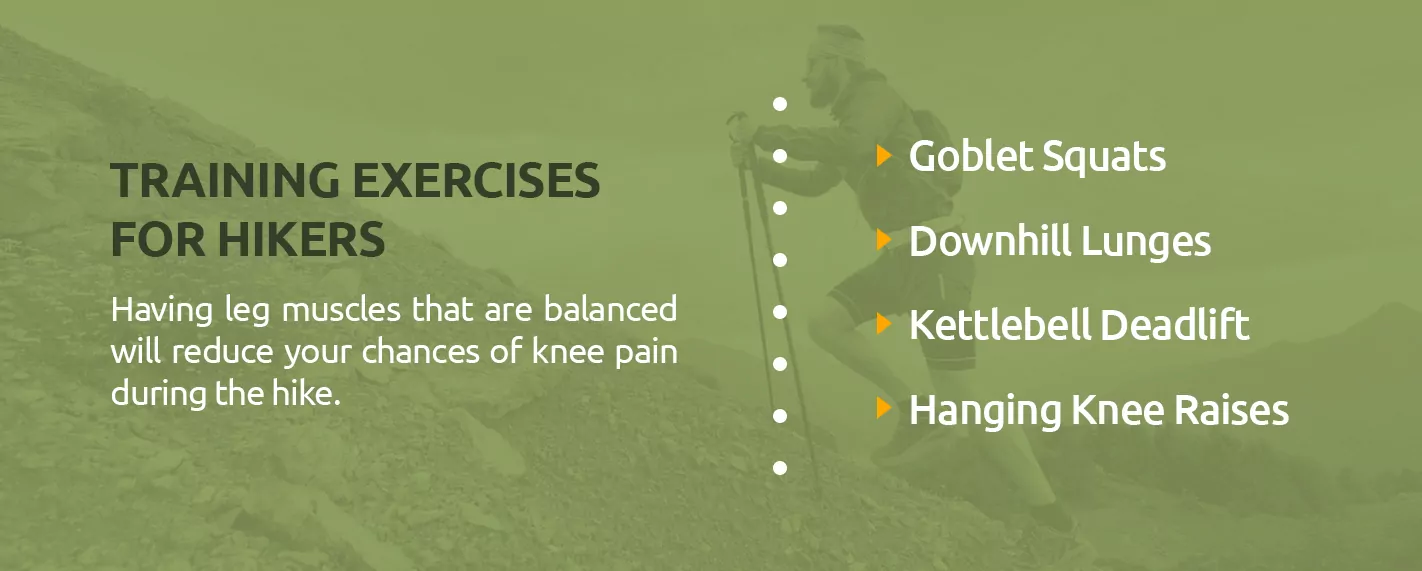
Prepare your body for the long, steep trails by doing a few easy exercises. Having leg muscles that are balanced will reduce your chances of knee pain during the hike. Consider adding some of the following exercises to your Grand Canyon hiking training program:
Goblet Squats
Hikers benefit greatly from goblet squats because they strengthen larger leg muscles like the glutes, quads and hamstrings. These are the primary muscles you use when you’re hiking, so it’s a good idea to include this simple exercise in your rim-to-rim training schedule. Here’s how you do it:
- Grab a kettlebell with both hands and hold it close to your sternum.
- Keeping your body weight on your heels, space your feet hip-width apart.
- Slowly bend down until your thighs are roughly parallel with the floor below. Make sure your knees go past your toes.
- Once your thighs become parallel, try to stand straight up, powering the movement through your heels, until you have fully extended your hips.
The above steps are one rep. A heavier dumbbell will make the squat more difficult, so we recommend gradually increasing your weight to make the exercise more challenging. If you do not have a kettlebell, you can use a dumbbell for this exercise instead.
Downhill Lunges
Lunges are an excellent way to prepare for a strenuous hiking trip. However, hikers often make the mistake of underestimating how much this exercise challenges their quads. Most hikers assume the climbs are the hardest part of the hike, but it is going down that always wears out your thighs. By practicing these downhill lunges, not only will you condition your quads better for any descent you encounter, but you will also end up with stronger core and stabilizer muscles.
Follow these steps to do a downhill lunge:
- Find a place with a gradual downhill you can easily navigate.
- Make sure your upper body is straight, your shoulders are back and your chin is relaxed.
- With one leg, step forward and lower your hips until your thigh and lower leg form a 90-degree angle. Your knee and ankle should directly align.
- Keeping your weight in your heels, stand up again. Your back leg should step forward so both feet end up together again.
- Repeat steps 2 through 4, but starting with your other leg. Aim to go 50 yards while doing this exercise.
Kettlebell Deadlift
This exercise is another good one to add for your hiking training. Deadlifts primarily target your hamstrings, which are extremely important for hiking. Here are the steps:
- With your feet at hip-distance apart and your toes pointing forward, hold a kettlebell with both hands so it rests between your thighs. Make sure you’re standing straight.
- While hinging at your hips and maintaining a neutral backbone, stick out your butt slightly as if you were using it to close the door to a car.
- Descend gently into a squat until your kettlebell hits the floor.
- Return to your original position by straightening your knees, then hinging your hips.
These four steps count as a single rep.
Hanging Knee Raises
Unlike the previous three exercises, this does not target the leg muscles, but rather your core. A well-developed core helps with many aspects of hiking — not only does it help you carry a large backpack, but it also makes it easier to avoid debris on the trail.
You can do hanging knee raises by following these steps:
- Find a pull-up bar, whether it’s at a gym or in a park.
- While extending your arms fully, hang down from the pull-up bar.
- Using your abdominal muscles, pull your knees up toward your chest as if you were sitting on a chair.
- Lower your knees back to your hanging position while making sure to maintain control. Steps 2 through 4 count as a single rep.
If the idea of working out by yourself is not appealing, think about signing up for gym classes. Fitness regimens like CrossFit are another option.
Book a Guided Tour With Wildland Trekking
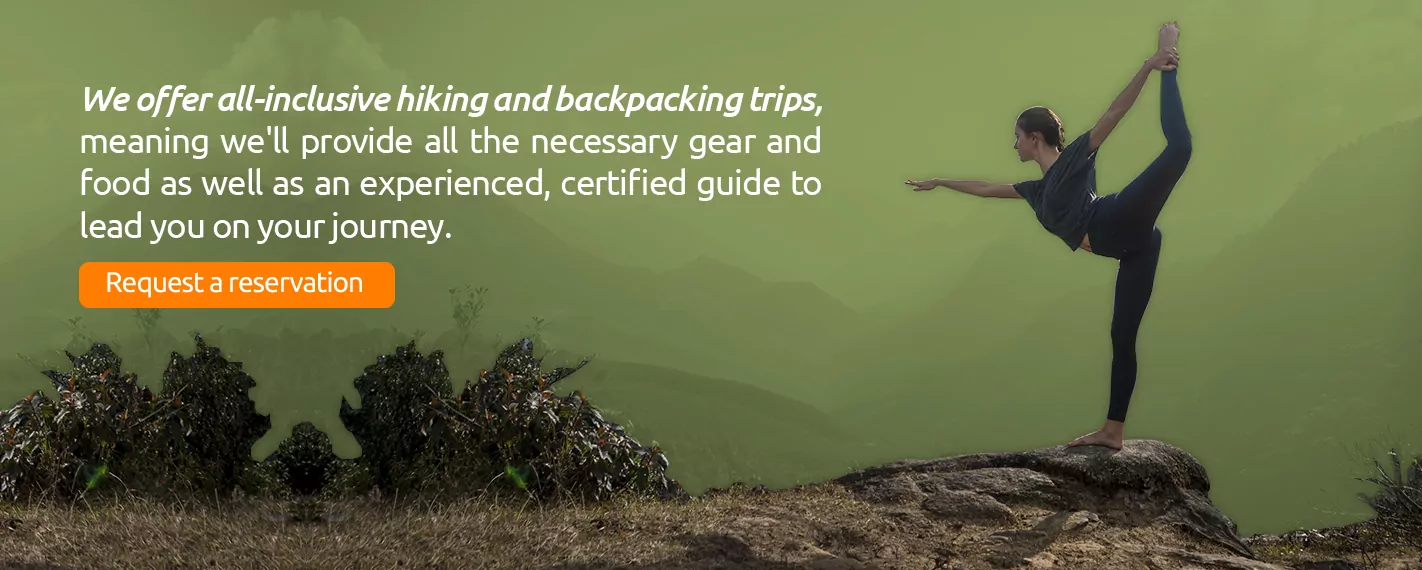
Grand Canyon hiking preparation requires lots of training, packing and planning. And while the training is something you have to do yourself, you can forgo all the packing and planning by booking a guided tour with Wildland Trekking. We offer all-inclusive hiking and backpacking trips, meaning we’ll provide all the necessary gear and food as well as an experienced, certified guide to lead you on your journey.
Some other benefits of our trips include the following.
- A variety of trip styles: Our styles include backpacking, stock- or porter-supported, inn-based, camping-based and day hikes.
- Small group sizes: None of our group adventures have more than 12 guests, and most have five to 10.
- High safety standards: Our certified guides adhere to the utmost safety standards throughout your journey.
- World-class destinations: In addition to the Grand Canyon, we offer hiking tours in several other famous destinations around the world.
- No need to obtain permits: Wildland Trekking takes care of this tedious task.
Visit our site to request a reservation.




